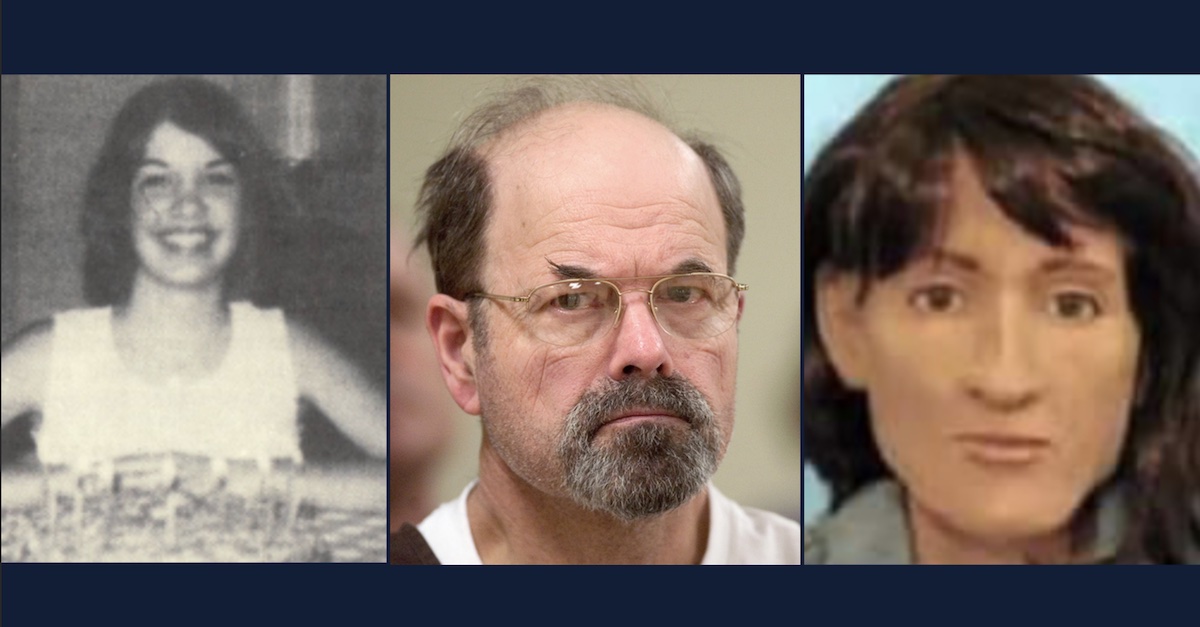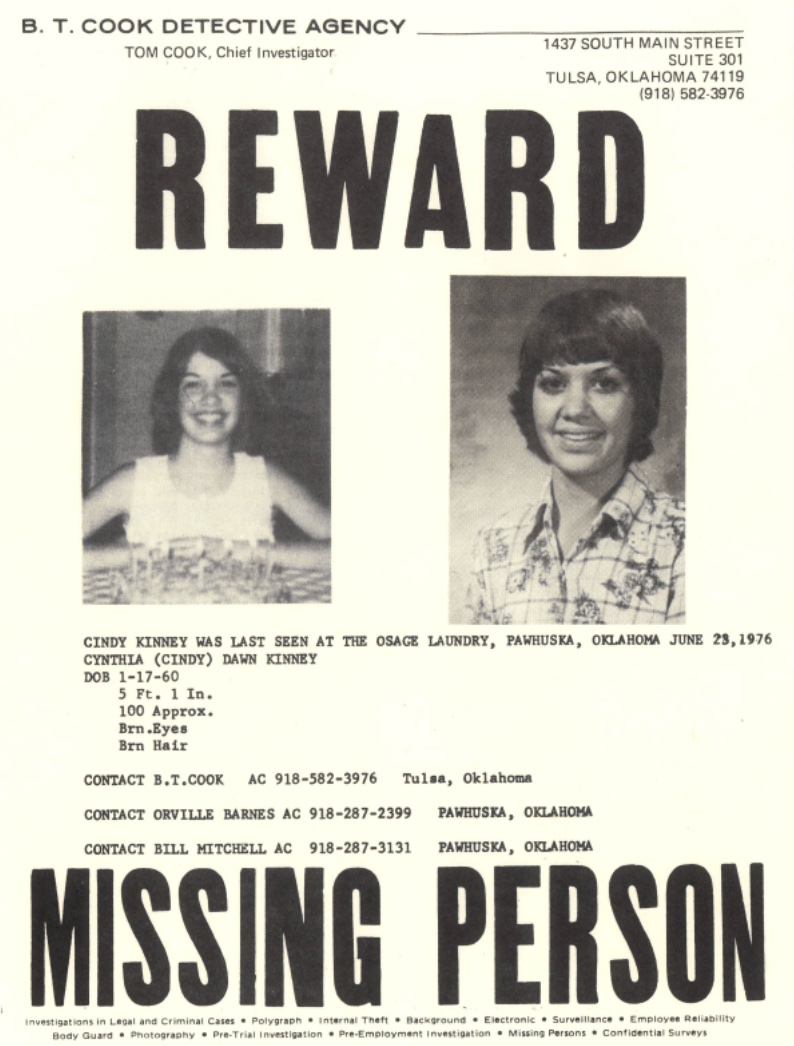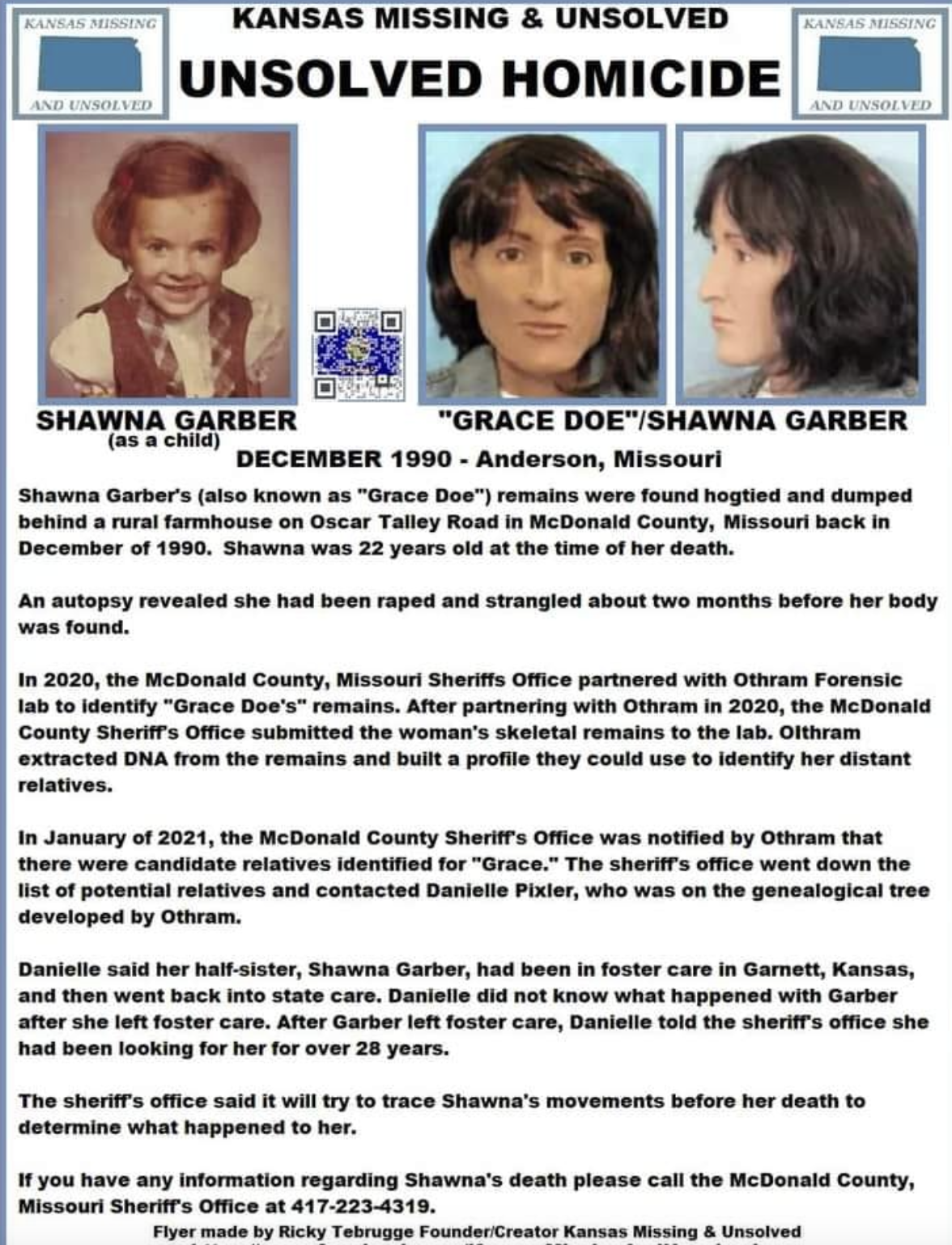
Cynthia Kinney (Osage County Sheriff’s Office, Oklahoma), Dennis Rader during a court proceeding on Oct. 12, 2005, in El Dorado, Kan. (Travis Heying/The Wichita Eagle via AP, Pool, File), a reconstructed facial rendering of Shawna Beth Garber, previously known as Jane Doe “Grace” (McDonald County Sheriff’s Office, Missouri)
Dennis Lynn Rader, the “Bind, Torture, Kill” serial murderer better known as BTK, will have to wait until Feb. 26, 2180, to be released from Kansas state prison for his crimes, but that staggering century-plus away could extend even further now that he’s been identified as the “prime suspect” in two more murders.
The sadistic self-nicknamed 78-year-old Wichita killer, a regional ADT alarm system installer, church council president, and Cub Scout leader known for evading capture for decades even as he taunted law enforcement and terrorized the public with menacing letters, was famously captured in 2005 because he sent a floppy disk to police containing metadata that led cops right to him.
Rader is currently serving 10 life sentences in Kansas state prison for the murders of the Otero family in 1974, the murder of Kathryn Bright and the attack on her surviving brother Kevin Bright in 1974, the 1977 murders of Shirley Vian and Nancy Jo Fox, the 1985 and 1986 murders of Marine Hedge and Vicki Wegerle, and the 1991 murder of Dolores Davis.
Now Rader’s own decades-old journal writings have come back to haunt him in long-unsolved Oklahoma and Missouri murders, both of which occurred within the time period of 1974 to 1991, when BTK is known to have killed a majority of victims by strangulation.
Cynthia Kinney
When 16-year-old cheerleader Cynthia Dawn Kinney vanished from a laundromat in Pawushka, Oklahoma, without a trace on June 23, 1976, Osage County authorities put out a reward for assistance in finding the 5’1″, 100-pound brunette who went by “Cindy.”

Cynthia Kinney missing person poster
To this day, Kinney’s remains have not been found, but the Osage County Sheriff’s Office led by Sheriff Eddie Virden announced a major development Wednesday directly linking Rader to the case.
Virden said his investigators searched Rader’s former Park City home and recovered “items of interest” — like “personal effects” — which “will undergo a thorough examination to determine their potential relevance” to ongoing investigations in Oklahoma and Missouri.

Investigators search Dennis Rader’s former home in Kansas. (Osage County Sheriff’s Office)
“At this stage, Dennis Rader is considered a prime suspect in these unsolved cases, including the Cynthia Dawn Kinney case from Pawhuska,” the sheriff’s office said.
On Thursday, the sheriff’s office revealed that an entry in Rader’s journal from 1976, written the year Kinney disappeared, made reference to “PJ-Bad Wash Day” — “PJ” standing for “project” — and a brunette he was stalking.
“The Brunette was the target. I would watch the near by Laundry Mat for possible victim see C-9 [chapter 9 of his unpublished book on the murders],” the entry said. “Laundry Mat were a good place to watch victims and dream, sometime I have a pair of women underwear on and after watching a girl or lady rerieve [sic] myself in bathroom with masterbations [sic] thoughts.”

Dennis Rader journal entry 1976.
Rader’s Park City, Kansas, residence was just over two hours of driving across state lines away from Osage County, Oklahoma, and that fact was not lost on Sheriff Virden.
In an interview with the New York Times, Virden said it dawned on him while watching a true crime series that Rader’s Kansas murders weren’t far from Osage County.
That series, which Law&Crime confirmed is “Catching Killers” and its Season 2, Episode 1 on BTK, sparked the sheriff to visit Rader in state prison. During that visit, the Times story says, Rader claimed he had never fulfilled the “fantasy” of a laundromat kidnapping.
Aware that Cynthia Kinney was kidnapped from a laundromat, investigators pored over the serial killer’s journals, which were “intact and recovered by Wichita PD at the time of his 2005” capture, after the search of his place of work and residence, Undersheriff Gary Upton told Law&Crime in a phone interview.
“Those journals were made available to us,” Upton said.
Read Related Also: Nancy Grace: ‘How Many Serial Killers Can There Be on One Small Stretch of Beach?’
Upton commented on the irony of a meticulous serial killer potentially being tripped up once again, as in his floppy disk downfall, by simply revealing too much. The undersheriff surmised that Rader would have destroyed the journal evidence “if he had known he was going to be arrested.”
“We connected the dots by way of his timeline in the journal,” examining Rader’s movements “in the tri-state area that looked like where he had touched and where he had been,” Upton said.
The undersheriff called it “speculative with 80% certainty” that Rader was in Osage County for work on the day Kinney disappeared, but he noted that a bank was under construction across the street from the laundromat at a time when ADT dominated the alarm system market across the nation.
Upton, noting that Kinney’s disappearance occurred two years after BTK is known to have committed five murders in Wichita, suggested that an Osage County work trip would have been a way for him not only to kill again but to lie low for a while outside of Kansas.
But the dots also connected Rader to McDonald County, Missouri, around four hours of driving away from Park City, Kansas.
Shawna Beth Garber
Polaroid photos already in the original BTK journal file showed a red blanket that appeared to belong to Shawna Beth Garber, a 22-year-old woman murdered in 1990 and known only as “Grace Doe” until DNA technological advancements led investigators to her half-sister in 2021.

Shawna Beth Garber missing person poster
The half-sister said that Shawna had been in foster care in Garnett, Kansas — two hours away from Park City — and then she never heard from Garber again after she left.
Shawna Garber was hogtied, raped, and strangled to death. Her remains were found in December 1990, left behind a rural Lanagan farmhouse in McDonald County, Missouri, two months after she was killed.
Undersheriff Upton told Law&Crime that his office “uncovered a lot of the evidence” and now they are “working in collaboration with McDonald County to do our best to resolve [the Garber] case, as well as the Kinney case.”
Asked about the next steps, Upton said “Our hope is at this point to have the FBI provide a list of all the items gained in their original search warrant” and test the red blanket for DNA.
BTK’s daughter speaks
After the news of the search at her father’s former home, Kerri Rawson said in a statement that she learned of the Kinney and Garber cases in January and June of this year.
“In June 2023, I contacted the McDonald County Sheriff’s Office in Missouri to offer my volunteer assistance on the Garber case. I was quickly connected with the Osage County SO, to which I offered the same aid, and was promptly flown to Osage County, OK, to assist on both cases,” she reportedly said. “I’ve returned since to the Osage County SO to work in a volunteer capacity as an active agent of LE, assisting on these two cases, including visiting my father twice at the El Dorado Correctional Facility.”
“Let’s keep working together to solve these cases for these families,” she added. “They deserve all that we can give them.”
Rawson told the Law&Crime Network in 2019 that despite everything, she was able to forgive her father for his monstrous crimes.
“I still love my father, because the only man I know was a mainly good and decent man,” she said. “So when people are shocked that I still love my father, I’m telling you I love Dennis Rader. I love my dad. I don’t know BTK. If I knew BTK, I probably wouldn’t be alive.”
Have a tip we should know? [email protected]







